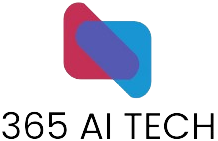The financial landscape is a constant battleground, with sophisticated and evolving fraudsters employing ever-more intricate tactics to exploit vulnerabilities. But fear not, for a new champion has emerged: AI automation. This powerful technology is transforming the way financial institutions fight fraud, offering unparalleled speed, accuracy, and adaptability in detection and prevention.
Beyond Human Capabilities: The AI Edge
While humans excel at critical thinking and pattern recognition, they are susceptible to fatigue, bias, and information overload. AI offers a distinct advantage by:
- Analyzing vast data troves: AI can process enormous datasets in real-time, identifying minute patterns and anomalies that slip past human eyes, like hidden correlations between seemingly unrelated data points.
- Continuous learning and evolution: Unlike static algorithms, AI algorithms constantly learn and adapt, staying ahead of ever-changing fraud tactics. This dynamic nature is crucial in the ever-shifting world of financial crime.
- Unveiling hidden connections: AI can identify complex relationships between disparate data points, uncovering fraudulent activities hiding in plain sight. This holistic analysis surpasses the limitations of traditional rule-based detection systems.
Real-World Impact: AI in Action
The benefits of AI are not just theoretical. Let’s delve into the war room of financial institutions wielding AI to combat fraud:
- Mastercard: Employs AI algorithms to analyze transaction data in real-time, flagging suspicious activity with a staggering 90% accuracy, preventing millions of dollars in fraud annually. This success highlights AI’s ability to detect subtle anomalies indicative of fraudulent behavior.
- Bank of America: Utilizes AI-powered chatbots to proactively detect and prevent account takeover attempts, safeguarding customer information and mitigating financial losses. These chatbots function as AI-powered sentries, engaging in conversations to identify discrepancies and suspicious behavior.
- JPMorgan Chase: Leverages AI to analyze loan applications, identifying potential fraud with impressive 70% accuracy, improving loan integrity and reducing financial losses. This demonstrates AI’s ability to sift through vast amounts of data to uncover fraudulent patterns within loan applications.
Choosing Your Weapon: A Guided Approach to AI Implementation
With a diverse landscape of AI solutions available, selecting the right tool can be daunting. Here’s your roadmap to successful implementation:
- Identify specific needs: Are you targeting credit card fraud, money laundering, or identity theft? Tailor your AI solution to address your most pressing vulnerabilities.
- Evaluate vendor expertise: Seek reputable vendors with proven track records in financial fraud detection and responsible AI practices. Look for established players with a deep understanding of your specific challenges.
- Data is your ammunition: Ensure your data infrastructure is robust and up-to-date to provide clean and reliable fuel for your AI algorithms. Remember, garbage in, garbage out.
- Transparency is key: Choose an AI solution that offers explainable results, fostering trust with stakeholders and ensuring regulatory compliance. Understanding how the AI reaches its conclusions is crucial for responsible usage.
Human-AI Collaboration: A Powerful Partnership
While AI is a formidable tool, it thrives alongside human expertise. Remember:
- Humans set the strategy: AI executes tasks defined by human experts, ensuring alignment with business goals and ethical considerations. Humans remain in control, wielding AI as a powerful instrument.
- Humans interpret results: AI identifies anomalies, but humans interpret their context and make critical decisions for effective action. Human judgment is still invaluable in assessing the nuances of complex situations.
- Continuous learning for all: Train your team to understand and leverage AI effectively, creating a culture of collaboration and innovation. Building a knowledge-sharing environment empowers both humans and AI to perform at their best.
The Future of Fraud Prevention: A Brighter Horizon
As AI continues to evolve, the future of fraud prevention is ablaze with possibilities. Imagine AI predicting and preventing fraud before it even occurs, or self-healing systems automatically adapting to new threats. These advancements can create an impenetrable shield against financial crime.
By embracing AI automation responsibly and strategically, financial institutions can:
- Create a secure and trusted environment: Foster customer confidence and loyalty by safeguarding their hard-earned assets.
- Reduce financial losses: Mitigate fraud-related costs and protect profitability.
- Contribute to a stable financial ecosystem: Build a more secure and resilient financial system for everyone.
The battle against fraud may be unending, but with AI as our vigilant sentinel, we have a fighting chance to emerge victorious. Join the fight and spread the word about how AI is shaping a brighter future for financial security.

